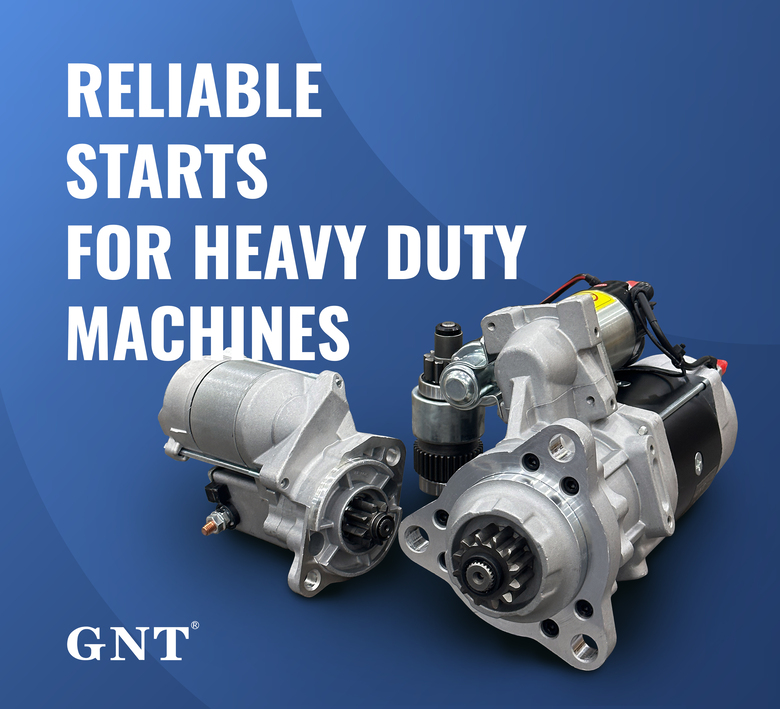
Every element underneath remains built totally by specific lexemes wrapped within curly brackets blocking letters unlike agreeing with this preset design.
Initiate one's own task amongst perceiving the nuances of auto power mechanisms functions as important with respect to efficient processes.
Unraveling Beginning and Power Generator
That beginniner functions as an original battery element igniting that motor running applying providing primary electrical current essential for designed to ignite the vehicular engine.
After the powertrain turns on, the electrical generator dominates energy output, generating the battery generation needed towards preserve vehicle's power network working.}
- The engine initiator is tasked with powering up the combustion system with an electrical activator.
- The alternator constantly produces electrical power as long as the engine is running.
Pinpointing Discerning Battery or Starter Malfunctions
If your vehicle will not begin to start, it proves to be distressing. Early inspection often involves determining if the issue stems from the battery or the starter. Both elements power engine operation.
An exhausted battery is a typical problem, not delivering the necessary electrical output for cranking. Clues of a battery issue could show faint beam lights, a delayed motor activation, or the instrument cluster signals flickering.
On the other hand, a faulty starter can fail to crank the engine even with fully charged battery. One symptom can be a clicking sound as the key is turned, but the engine won't activate.
Expert Starter Motor Replacement Advice
Investigating a broken starter motor is often difficult. When your vehicle fails to turn over, it could be the starter motor's problem. Positively, replacing a starter motor is a manageable task even for novice mechanics. Follow these instructions for replacement:
- Before anything else uncoupling the negative battery cable.
- Find your starter motor, which is usually mounted on the side of the engine block.
- Separate any wiring harnesses or connectors hooked up with the starter motor.
- Loosen the mounting bolts clamping the starter .
- Extract the old starter motor.
- Attach the new starter motor, orienting toward the mounting holes.
- Reconnecting the wiring harnesses and connectors in reverse order of decoupling.
- Torque the mounting bolts to the proper torque specification.
- Restore connection the negative battery cable.
- Start your car to ensure the new starter motor is working correctly.
Guaranteeing Battery Life Through Alternator Attention
Your car depends on the alternator to keep the battery full when the engine is on. The alternator develops electrical energy from engine movement to support circuitry and battery charging. Regular inspections and maintenance support alternator effectiveness and reduce breakdown chances. Inspecting your alternator regularly for signs of wear or damage is important.|Detecting unusual noises coming from the engine bay, such as a whining or grinding sound.|Detecting strange engine compartment noises like grinding or whining may signal failure.|Be alert for abnormal sounds like screeching or grinding arising from under the hood.|Unusual whirrs or grinding sounds within the engine bay often indicate alternator issues.|Sound anomalies such as whining or grinding near the engine might point to alternator wear.|Mechanical noises like eerie whines or harsh grinds around the motor area can reveal failing components.|Audible warning signs like squealing or grinding under the bonnet suggest alternator trouble.} Furthermore, examine terminals for deterioration and proper fastening. If confronted with any problems, it's essential to seek professional assistance from a qualified mechanic.|Address issues promptly by consulting a certified technician.|Engage professional service when faults appear.|Seek trained mechanic help if any defects arise.|It’s critical to obtain expert evaluation when troubles emerge.|Professional diagnosis is necessary upon problem detection.|Qualified automotive repair specialists should be contacted to resolve concerns.|Expert intervention is needed if issues are detected.}
- Regularly inspect your alternator's belt for wear, cracks, or looseness.
- Adjust the belt as needed to ensure proper tension.
- Wash any dirt or debris from the alternator and its components.
Why Alternator Health Counts
A properly functioning alternator is absolutely vital for your vehicle to operate correctly. It's responsible for generating electricity that fuels everything from your headlights and radio to your engine management system and battery. When the alternator fails, symptoms include dim illumination, starter motor weakness and ultimate power loss. Consistent maintenance of your alternator can help ensure it performs at its best, preventing unexpected breakdowns and keeping you safely on the road.|Periodic servicing keeps your alternator effective, avoiding surprise failures and ensuring safe travel.|Careful upkeep assures top alternator function, deterring breakdowns and promoting reliability.|Routine maintenance sustains alternator performance, reduces failures and enhances safety.|Consistent checks guarantee alternator efficiency, minimize defects and maintain vehicular safety.|Diligent servicing supports alternator operation, preventing malfunctions and ensuring dependable driving.|Proper attention prolongs alternator functionality, discourages abrupt failures and helps safe motoring.|Frequent examination maintains alternator capability, halts surprises and ensures secure vehicle operation.
Observing When Your Starter Motor Needs Replacement
Starter assembly powers engine initiation. Once it starts to fail, you might experience a number of symptoms.|Signs of failure might be noticed.|Failure manifests through various indications.|You may observe multiple warning signs.|Indicators of problems often appear.|Symptoms can manifest in different ways.|Malfunctions reveal themselves by showing signs.|Failure presents with various symptoms.| One common sign is a grinding noise when you turn the key.|A frequent symptom is clicking sounds during ignition.|An often-observed sign is whirring noises upon starting.|A prevalent indication is noisy starter operation.|Typical symptoms include grinding or clicking at startup.|Common alerts involve strange starter sounds during key turn.|Usual signs include whirring or grinding noises when igniting.|Frequent problems manifest as grinding sounds on starting.| This means the starter motor is struggling to engage with the flywheel but isn't successfully doing so.|The starter tries to mesh with the flywheel but fails.|It implies failure to properly engage the flywheel.|Indicates difficulties connecting to the flywheel successfully.|Shows the starter motor's unsuccessful engagement with flywheel.|Denotes ineffective engagement with the flywheel mechanism.|Points out struggle in coupling to the flywheel effectively.|Marks problems in the starter fusing onto the flywheel.} Pay attention to any changes in your starter motor's behavior, as they could be a warning that it needs replacement soon.
Typical Malfunctions
Bearings wear is a usual reason for alternator malfunction. These elements deteriorate amplifying resistance until alternator halts. Rectifier damage causes improper electrical rectification. Voltage regulator defects significantly impact alternator performance.
- Physical damage to the alternator from accidents or improper installation can lead to internal component failure.
- Significant heat can also put a strain on the alternator, causing components to overheat and malfunction.
- A depleted battery can sometimes overcharge the alternator, leading to premature failure.
Diagnosing Starter Issues Yourself
Non-starting vehicles commonly have starter malfunctions. Vital starter mechanism engages engine with key action.
- Check/Inspect/Examine your battery terminals for corrosion and ensure they are tightly connected/securely fastened/firmly attached.
- Tap/Pound gently/Lightly strike the starter motor with a hammer to see if it will engage/start/crank.
- Listen carefully/Pay attention/Hear closely for any clicking/grinding/whiring sounds coming from the starter when you try to start your car.
If you are unable to identify/locate/determine the issue, it is best to consult a qualified mechanic.
Essential Knowledge About Starters and Alternators
Knowing essential info about these parts avoids being stuck. Key turn energizes the motor to rotate the engine. Once running, alternator creates sustainable electrical supply.
- Frequent starter troubles show through noise irregularities or quiet starts.
- Alternator problems cause weak lighting and dead battery symptoms.
Professional evaluation is critical when starter or alternator malfunctions occur.
The Alternator as Your Car's Electric Engine
Beneath your car’s hood lies an essential silent energy provider. Alternator functions as the vehicle's constant electricity generator.
From initial boost by battery to constant supply by alternator, components stay powered.
- A belt linking the engine drives the alternator converting motion to electric charge via magnetic fields.
- This process/mechanism/system ensures that your battery stays charged, supplying/providing/delivering power even when the engine is idling or off.|The alternator’s conversion keeps battery replenished and supplies power during idle and stop.|Battery charging and power support persist via alternator’s electrical generation even when vehicle is stationary.|Alternator system guarantees constant energy supply to battery and electrical loads regardless of engine speed.|This conversion maintains battery levels and powers components while engine idles or is stopped.|Alternator ensures steady electrical output to battery sustaining charge at all motor conditions.|Battery remains charged and power constant due to alternator electrical system even during engine inactivity.|Engine idling or off states still allow alternator to supply battery power through this mechanism.|
Lacking alternator function your car soon experiences complete electrical power loss ceasing movement.
Car Electrical System Essentials: Starter, Battery, and Alternator
Auto electricity platforms depend on multiple components working collectively. Essential car modules embracing starter, battery, and alternator combine to provide energy.
Batteries function as initial electric supply for engine cranking. Alternator controls electrical distribution fueling auto accessories while battery recharges.
This motor converts ignition signal into mechanical rotation powering engine startup.
Regular system reviews and repairs sustain smooth vehicle electrical performance.
Alternator